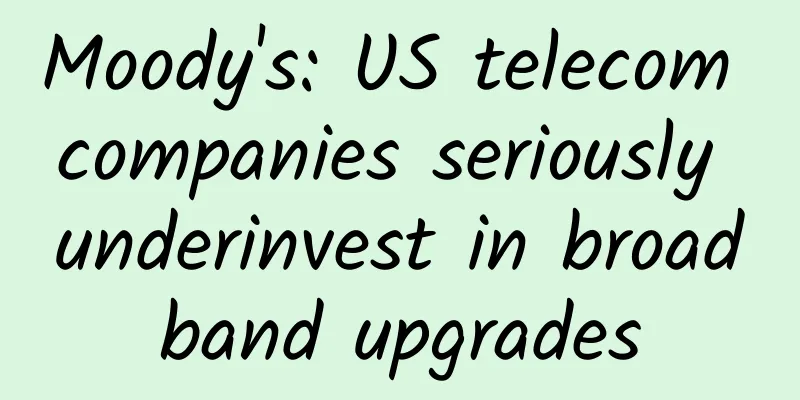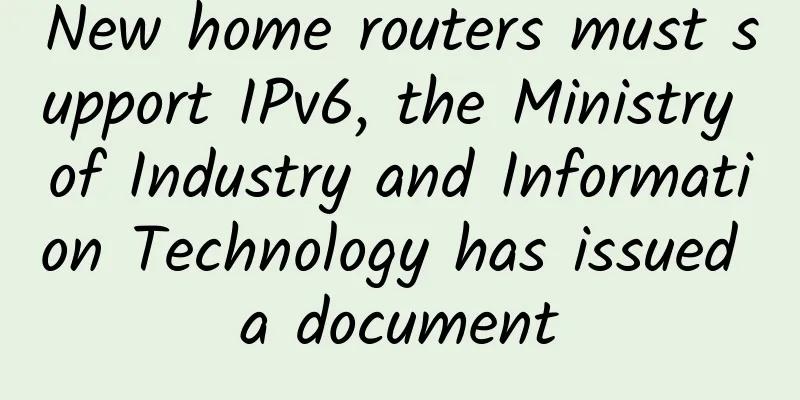Moody's: US telecom companies seriously underinvest in broadband upgrades

|
According to foreign media reports, Moody's, a well-known rating agency, pointed out that for some time, the monopoly of wired broadband in most parts of the United States has been intensifying, and many telecom companies have refused to upgrade unnecessary DSL customers - they are shifting their business focus to content and media (representative cases include AT&T's acquisition of Time Warner and Verizon's acquisition of AOL and Yahoo), while other telecom companies have also shifted their focus from residential broadband to corporate services (such as CenturyLink and Windstream). Few companies are willing to risk angering investors to upgrade copper wire networks to fiber networks at a real scale.
If you understand this, you will understand what Moody's said in its newly released report "Domestic Telecom Companies Underinvest in Broadband - Intentional." "With the exception of Verizon's FiOS business, the U.S. telecom industry has significantly underinvested in broadband," said Mark Stodden, vice president and senior credit officer at Moody's Investors Service. "Given the need for additional capital, cable operators will not see meaningful market share gains." In other areas outside of Boston, Verizon has also frozen its FiOS deployment as the company shifts its focus to wireless and advertising to millennials through its Go90 streaming video service. The results are clear. In the third quarter of 2016, there were 625,000 net broadband subscriber additions, with about 99% going to cable TV providers. Cable companies added 775,000 broadband customers last quarter, while telecoms lost 150,000 net broadband customers during the same period. Telecoms have lost net broadband customers in five of the past six quarters, with companies like CenturyLink and Frontier leading the pack in the number of subscribers that have switched to cable TV providers. This trend is expected to intensify in 2017, when most telecom companies will be forced to upgrade their customers if their business is located in housing developments or other areas where fiber has already been deployed and expansion is expensive. The end result will be less competitive than before, leading to higher fees and customer skepticism about the service of domestic cable operators. |
>>: Pan-Sahara fiber optic backbone network receives RMB 320 million in financing from AfDB
Recommend
DesiVPS: $20/year KVM-1.5GB/20GB/2TB/changeable IP/Los Angeles data center
DesiVPS recently sent a new promotional package, ...
Edge networks are evolving towards intelligence and computing enhancement
"Always on, always connected" has becom...
Actual combat: Can you believe it? Two VRRP hot standby gateways were installed in the operator's central computer room at the same time, but they fought with each other and caused the entire network to explode!
The case shared in this issue is related to VRRP ...
Fenghuo will present FitOS6.0 cloud operating system at 2017 OpenStack Sydney Summit
[51CTO.com original article] As the most importan...
In the 5G era, virtual operators “disappear”
[[269893]] "In the 4G era, the three major t...
HawkHost: $5/month-1GB/30G SSD/2TB/Singapore, Hong Kong, Los Angeles and other data centers
When we talk about HawkHost, the first thing that...
Ministry of Industry and Information Technology: my country has opened a total of 961,000 5G base stations
On July 17, at the press conference on the develo...
Is the 5G era really here? Let’s solve the dilemma of 5G spending too much and earning too little first
On June 14, the 5G independent networking standar...
spinservers: $69/month - 2*E5-2630Lv2, 64G memory, 1.6TB SSD hard drive, 1Gbps bandwidth, unlimited traffic
spinservers has released a special promotional US...
Ministry of Industry and Information Technology: Data "roaming" fees will be cancelled as scheduled on July 1
The State Council Information Office held a press...
Megalayer: Philippines/US/Singapore/Hong Kong VPS hosting, starting at 199 yuan per year
Megalayer is restocking VPS with special annual p...
The 5G competition between China and the United States is heating up. What will the future hold?
As we all know, 5G has become the main battlefiel...
Just look at these three pictures and you can understand the OTN layered structure
OTN (Optical Transport Network) is a hierarchical...
Gigsgigscloud's new Singapore cloud starts from $9.8/month, 1G memory, 10G SSD, 500GB/1Gbps monthly traffic
Gigsgigscloud has launched a new Singapore cloud ...
Share an interesting data analysis method
[[405125]] This film note is a development summar...









